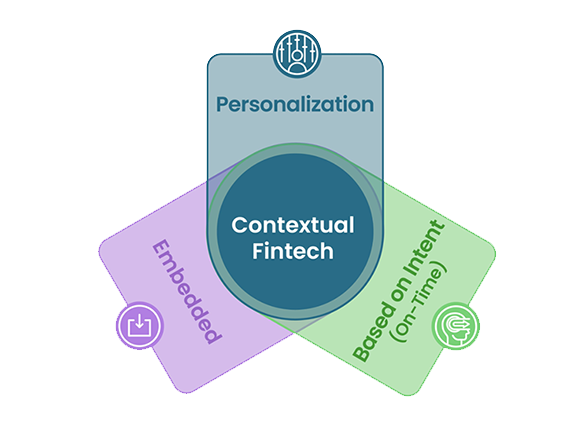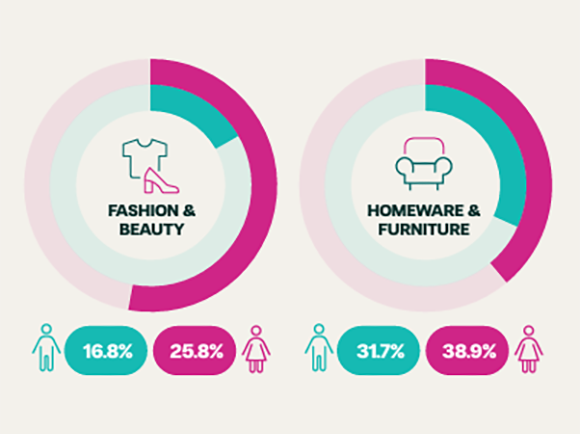How does Buy Now, Pay Later compare to other forms of finance?

Checkout finance, sometimes referred to as Buy Now, Pay Later (BNPL), is one of the fastest growing forms of consumer finance. Juniper Research predicts that the global number of BNPL users will increase from 360 million in 2022 to over 900 million by 2027, as customers flock towards their many benefits: interest-free credit, easy user experiences and flexible payment plans, to name a few.
Still, the popularity of checkout finance pales in comparison to that of more established forms of consumer finance, such as credit cards and overdrafts. As of 2022, there were 2.8 billion credit cards in circulation worldwide, while around 16% of households in the US have used an overdraft in the last 12 months.
The big question is whether Buy Now, Pay Later will continue its meteoric rise and start to compete with these household names in the consumer finance world. Given that checkout finance has obvious advantages over other forms of finance, it could be argued that the most important factor left is trust. In other words, can Buy Now, Pay Later become as trusted as credit cards and overdrafts?
The results are in
Divido’s latest survey reveals that trust in checkout finance rivals that of credit cards, and may even place it ahead of several other forms of consumer finance.
In February 2023, we surveyed 1,993 people in Britain and revealed some interesting statistics about their trust in, and usage of consumer finance.
We asked which forms of payment customers would be likely to choose if they had to spend a significant sum (£1,000) on an online transaction. We gave five options of common consumer finance options, plus the option to borrow from friends and family and (as a control question), the option to finance a transaction from their own savings.
|
How likely would you be to use the following payment options if you were spending £1,000 on an online purchase? | |||||||
|
Checkout finance |
Credit card |
Overdraft |
Personal loan |
Payday loan |
Borrow from friends & family |
Personal savings | |
|
Highly likely |
16.5% |
23% |
6% |
5.9% |
4% |
4.9% |
22.1% |
|
Somewhat likely |
33.7% |
38.1% |
18.2% |
16.9% |
10% |
14.1% |
43.5% |
|
Not sure |
17.7% |
16.1% |
15% |
18.7% |
10.4% |
14.2% |
15.8% |
|
Somewhat unlikely |
12.3% |
10.4% |
20.7% |
23.2% |
12.6% |
21.4% |
10.8% |
|
Highly unlikely |
19.8% |
12.3% |
40.1% |
35.2% |
63% |
45.3% |
7.9% |
The results show that checkout finance is the second-most preferred consumer finance option behind credit cards. Half (50.2%) of the sample were likely or highly likely to choose checkout finance, while almost two-thirds (61.1%) said they would choose to use a credit card. This means that people are more than twice as likely to choose checkout finance over an overdraft, with only a quarter (24.2%) of the sample likely to choose this option. 22.8% said they might choose a secured personal loan, with just 14% likely to use a payday loan. Meanwhile, 19% said they were likely to ask friends or family, with around two-thirds (65.5%) saying they would pay out of their own pocket. 
Previous users greatly favour checkout finance
If we filter the results to look at only consumers who have used checkout finance at least once in the past (57.7% of the total sample), we notice that checkout finance jumps to the top of the list.
|
How likely would you be to use the following payment options if you were spending £1,000 on an online purchase? | |||||||
|
Checkout finance |
Credit card |
Overdraft |
Personal loan |
Payday loan |
Borrow from friends & family |
Personal savings | |
|
Highly likely |
25.8% |
21.3% |
8.3% |
8.7% |
5.7% |
6.8% |
18.1% |
|
Somewhat likely |
47.4% |
44.1% |
23.3% |
23.3% |
14.9% |
18.1% |
46% |
|
Not sure |
16.3% |
16.4% |
17.6% |
20.9% |
12.2% |
16.4% |
17% |
|
Somewhat unlikely |
7.1% |
10.8% |
20.8% |
23.5% |
13.4% |
22.6% |
11.3% |
|
Highly unlikely |
3.4% |
7.3% |
30% |
23.6% |
53.8% |
36% |
7% |
Among people who have used checkout finance in the past, most (73.2%) would be likely or highly likely to use it again. This makes it their preferred payment option ahead of credit cards (65.4%), overdrafts (31.6%) and even personal savings (64.1%).
Indeed, when this demographic was asked whether they intended to use checkout finance again in the next 12 months, 44% said they would, while 51% said they were considering it. Only 5% said they were not planning to use it again.
This shows that trust for checkout finance is high amongst existing users. After at least one purchase with checkout finance, consumers are significantly more likely to choose it again, even preferring it to other forms of consumer finance. The big challenge for merchants, then, is to ensure that more people are able to complete their first checkout finance purchases in the future.
Women and younger people are more likely to choose checkout finance
Going back to our original sample of the general public, we find that females are significantly more likely to choose consumer finance than males.
|
How likely would you be to use the following payment options if you were spending £1,000 on an online purchase? | ||||||
|
Females |
Males | |||||
|
Checkout finance |
Credit card |
Overdraft |
Checkout finance |
Credit card |
Overdraft | |
|
Highly likely |
17.9% |
18.8% |
7.2% |
14.9% |
27.5% |
4.7% |
|
Somewhat likely |
38% |
41.9% |
21% |
29.3% |
34.1% |
15.2% |
|
Not sure |
17.4% |
17.7% |
16.1% |
18% |
14.4% |
13.9% |
|
Somewhat unlikely |
13.1% |
10.4% |
20.7% |
11.5% |
10.4% |
20.6% |
|
Highly unlikely |
13.7% |
11.2% |
34.9% |
26.2% |
13.5% |
45.6% |
While more than half (55.9%) of women said they would choose checkout finance (with 60.7% also considering credit cards an option), fewer than half (44.2%) of men said they would choose checkout finance (versus 61.6% who would consider using a credit card). Men are also more likely to ‘strongly disagree’ with using checkout finance.
Perhaps checkout finance has an image problem among male consumers? Merchants and providers should be mindful of this discrepancy, and work to ensure that their payment options address the lack of trust among male consumers.
Another way to interpret the data is by age. Here we find that younger audiences (18–35) are far more receptive to choosing checkout finance, while older consumers (56+) hold steadfast to their trust in credit cards.
|
How likely would you be to use the following payment options if you were spending £1,000 on an online purchase? | ||||||
|
Ages 18–35 |
Ages 36–55 |
Ages 56+ | ||||
|
Checkout finance |
Credit card |
Checkout finance |
Credit card |
Checkout finance |
Credit card | |
|
Highly likely |
20.9% |
19.6% |
20.4% |
19% |
10% |
29.2% |
|
Somewhat likely |
41.9% |
42.4% |
38.4% |
40.5% |
24.1% |
32.7% |
|
Not sure |
17.6% |
16.7% |
17.2% |
17.5% |
18.3% |
13.9% |
|
Somewhat unlikely |
12.3% |
11.8% |
10.4% |
11.7% |
13.8% |
8.9% |
|
Highly unlikely |
7.3% |
9.5% |
13.6% |
11.3% |
33.8% |
15.3% |
Trust in checkout finance appears to decline with age, with about two thirds (62.8%) of 18–35 year olds choosing it, compared to 58.8% of 36–55 year olds and just over a third (34.1%) of over 55s.
Meanwhile, credit cards are fairly popular across all age groups. About two in three people (62% of 18–35 year olds, 59.5% of 36–55 year olds, and 61.9% of over 55s) would choose a credit card).
While it is noteworthy that checkout finance is slightly more popular than credit cards among younger demographics, there is still plenty of work to be done to increase trust for older generations.
Checkout finance is competitive, but credit cards remain on top
Ultimately, the data show us that checkout finance (Buy Now, Pay Later) is the definitive second-place option for consumer finance.
Around half of the UK population would be open to choosing this payment type to fund the cost of a high-ticket purchase, ahead of more traditional financing methods like personal loans and overdrafts.
However, there is still ground to be made up. Men and older generations seem to be sceptical about choosing checkout finance. This suggests that there may be a trust gap that needs to be filled.
A significant learning is that people who have used checkout finance in the past are highly likely to choose it again. This suggests the major hurdle for Buy Now, Pay Later providers is convincing consumers to make their first purchase.
Naturally, there are a great number of rules restricting the ways in which providers can incentivise consumers to take out finance, and providers must always be mindful of their duty of care.
But, with the right Buy Now, Pay Later marketing strategy, these parties may start to see incremental increases in the number of checkout finance users.
The bottom line is that checkout finance will continue to grow. It is already snapping at the heels of credit cards, while it has jumped miles ahead of other forms of consumer finance, such as overdrafts, personal loans and payday loans.
Discover more groundbreaking checkout finance statistics
Based on a survey of the British public, Divido’s latest research uncovers how customers are shopping with checkout finance – and how they feel about it. Download your free copy of the report today and get to know checkout finance like never before.

You might also
be interested in
Keen to know more?








